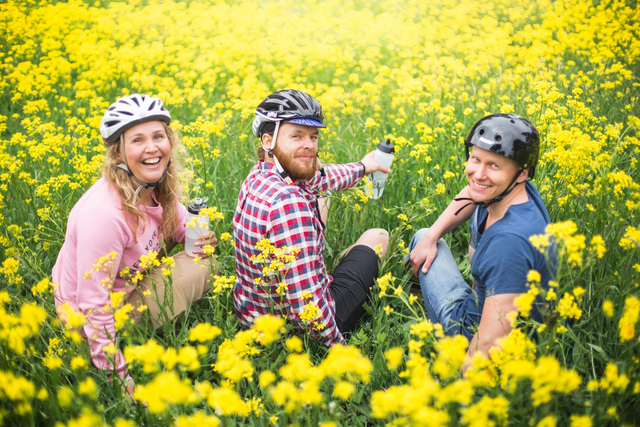Reducing emissions from consumption and transport together with residents: Tesoma, Vuores, Leinola and Vehmainen as target areas
With the Carbon Neutral Actions development programme, which was launched last year, the City of Tampere is promoting a fair transition towards a sustainable future. In addition to reducing emissions from consumption and transport, the programme aims to promote the circular economy and biodiversity.
– Tampere aims to be climate neutral by 2030. The city cannot achieve this goal without the participation of its residents and businesses. A fair transition means finding ways to reduce emissions for different residents and businesses. Not every method will be suitable for everyone, but there will be something that each of us can do, says Programme Manager Tiina Leinonen.
– Many climate actions also bring other benefits to our everyday lives. For example, they cost less money, they’re healthier to eat or they make us exercise outside in nature more often. In addition to reducing emissions, our goal is to improve the well-being of Tampere residents, Leinonen emphasises.
Residents have a key role
The development programme’s resident outreach is focused in three target areas: Vuores, Tesoma and its surroundings as well as Leinola and Vehmainen. For these areas in particular, there are events, trials and many opportunities for resident participation planned. The work will begin in March with the Sujuva ja kestävä arki (Smooth and Sustainable Daily Life) Residents’ Evenings.
– Residents are important experts and actors. They have local knowledge, they are able to identify everyday obstacles and incentives for sustainable living. Only the residents themselves know which carbon-neutral actions are suitable for them, and which factors encourage them to make even small changes in their everyday lives, says the development programme's Planning Officer Mimmi Virtanen, emphasising the active role of residents.
The development can be related to goods and service, walking and cycling routes, food, recreational activities or promoting local tourism, for example.
– A peer rental trial, bicycle maintenance workshop, vegetarian food course, bus stop art, events promoting safe pedestrian crossings, a communication campaign on sustainable consumption – there are many ways to promote a resident-oriented sustainable everyday life, Virtanen lists.
Within the city, actors affecting the everyday lives of residents are important partners. These include schools, daycare centres, libraries and public transport services.
By studying the target areas, we can learn more about sustainable everyday life and find good practices that can be introduced elsewhere in the city.
Driven by a need to reduce emissions from transport and consumption
Tampere monitors its climate emissions trends through an annual climate budget. According to the climate budget, traffic emissions have not decreased as quickly as the climate neutrality target requires.
Usually, the greenhouse gas emissions and objectives of cities are only based on emissions within a city's geographical area. This means that the emissions from products manufactured elsewhere are not included in the figures. At the end of January, the Finnish Environment Institute published information on municipal consumption-based emissions. According to SYKE's calculations, 80 per cent of municipal emissions in Finland are caused by residential consumption.
Consumption-related emissions are the next major challenge that municipalities need to solve.
– The challenging part is that we rarely recognise the emissions from our own consumption. In practice, we can say that consumption-related emissions are twice as large as regional emissions in Tampere, Tiina Leinonen says.
The carbon footprint based on Tampere residents' consumption was already examined for the first time in 2021 as part of the Kulma project. The calculations took into consideration emissions from the consumption of energy and construction, mobility, food and goods and services.
Leinonen emphasises that it is the city’s responsibility to enable solutions that support sustainable everyday living and help residents make sustainable choices.
– Businesses also have an important role. That's why, in addition to resident outreach, a key focus of the development programme is to promote the circular economy among businesses. Businesses create more resource-efficient products and enable residents to use new solutions that promote the circular economy in everyday living. All of these are interlinked, so we need to approach this issue in a holistic way.




